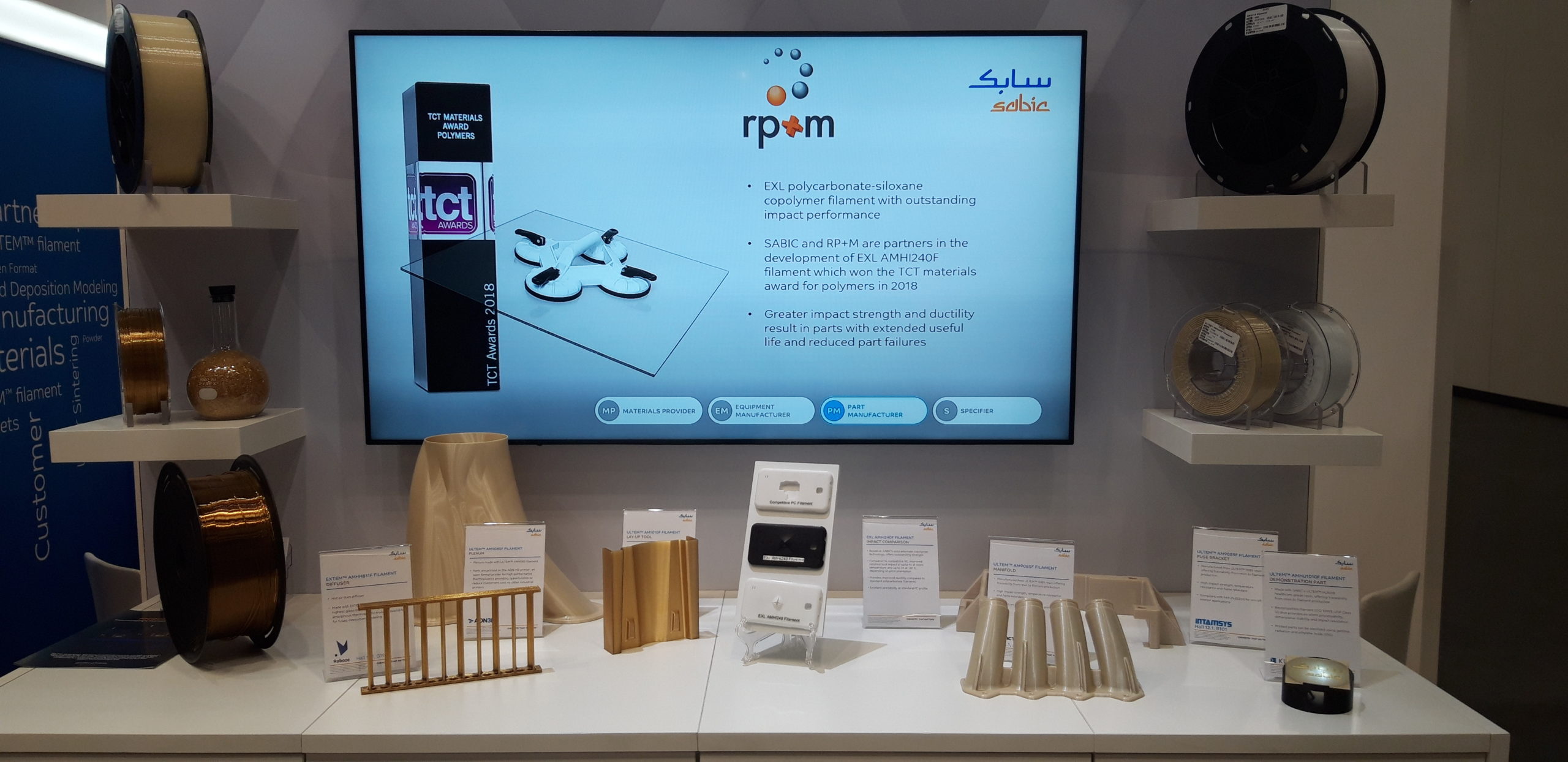
Keith Cox brings over 35 years in the plastics industry, and has been working with SABIC since 2007. First assigned to the product development unit of the company, he witnessed he increasing interest of the materials company in additive manufacturing and took part in the implementation of a strategic approach to drive innovation in this market. In seven years of R&D, and release of new products, the materials company has found its place in this value chain.
At formnext 2019, Keith Cox, Sr. Business Manager – Additive Manufacturing at SABIC discussed the company’s focus on addressing the challenging market needs.
“During the past five years, we have been working on a variety of solutions: resins, filaments, specialty compounds; and every product was meant to address a specific purpose”, Keith Cox told 3D ADEPT Media. Known for its high-performance materials, the company’s main approach to develop an AM material consists in designing the materials, and thereafter optimizing the processes before releasing the final product.
During our conversation, Cox stressed that SABIC mainly drives innovation in large format – extrusion 3D printing. “There is also a lot of interest for resins and filaments and our first powder product for SLS is still in process”, said the Sr. Business Manager. “However, the most important is not to release materials but to release materials that are not yet available on the market, that will bring added value to a given production process while leading to a new application”, the specialist added.
While Cox walked us through their booth at Formnext, we discovered various applications that came from different materials. We also noticed an ability to bring new materials on the market through a specific chain of collaborations.

Collaborations enable AM to become a widely-used production technology
As several global materials companies now enter the additive manufacturing arena, it becomes more challenging to stand out from the crowd. Luckily, SABIC has managed to find its away among this crowd through collaborations. In this vein, Cox pointed out the company’s collaborations with 3D printer manufacturers, material producers as well as collaborations with OEMs.
SABIC’s spokesperson stressed the main launches that occurred with 3D Printer manufacturer Stratasys. As a reminder, designed for use with Stratasys® Fortus® printers, these materials are based on the company’s ULTEM™ PEI resin, ABS resin and LEXAN™ polycarbonate (PC) resin. They offer the same composition as the producer’s injection molding grades.
Another equipment manufacturer that benefits from SABIC’s expertise is ROBOZE. Named EXTEM™ AMHH811F, the new material is designed for the Italian manufacturer’s ARGO Production 3D Printers. Ideal for high-heat applications in a wide range of industries, the two partners optimized printing parameters for this material. Furthermore, the filament also gets the UL94-V0 certification at 0.75mm on 3D Printed samples.
Speaking of collaborations with other material producers, Keith Cox highlighted their recent collaboration with BASF that led to the development of the PEI 9085, strengthened by SABIC’s resin.
When asked if there is a difference in the collaboration with 3D printer manufacturers and with material producers, Cox replied: “whatever the collaboration is, the issue is unique. The differences rely on the specifications of the material that will be discussed: tolerances, parameters, etc. It goes without saying that, the size, the maturity and the evolution of the company within the AM space will influence the way we will collaborate.”
As far as OEMs are concerned, SABIC mentioned its ongoing collaboration with Local Motors, US-based car manufacturer, that received SABIC’s LNP™ THERMOCOMP™ AM portfolio of reinforced compounds. These materials were leveraged during the production of the Olli, a self-driving electric vehicle.
These collaborations show how SABIC is working across the value chain to produce and deliver tailor-made materials. However, Cox and the whole team of the Saudi firm are well aware of the fact that the AM-industry does not only face materials-driven challenges. “Standardization is also a major challenge the industry has to overcome, given the stringent requirements of the technology and every stakeholder needs to keep an eye on it”, concluded the expert.
You can now post free of charge job opportunities in the AM Industry on 3D ADEPT Media.
For further information about 3D Printing, follow us on our social networks and subscribe to our newsletter : Facebook, Twitter, LinkedIn & Instagram !
Would you like to be featured in the next issue of our digital magazine? Send us an email at contact@3dadept.com


